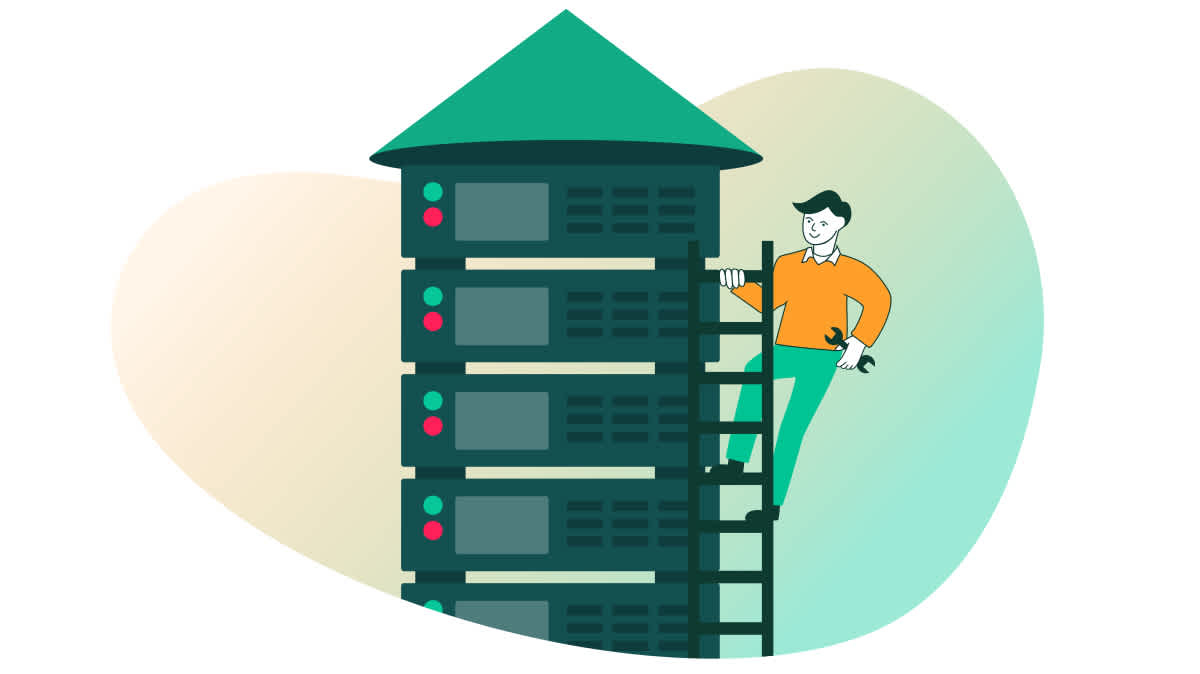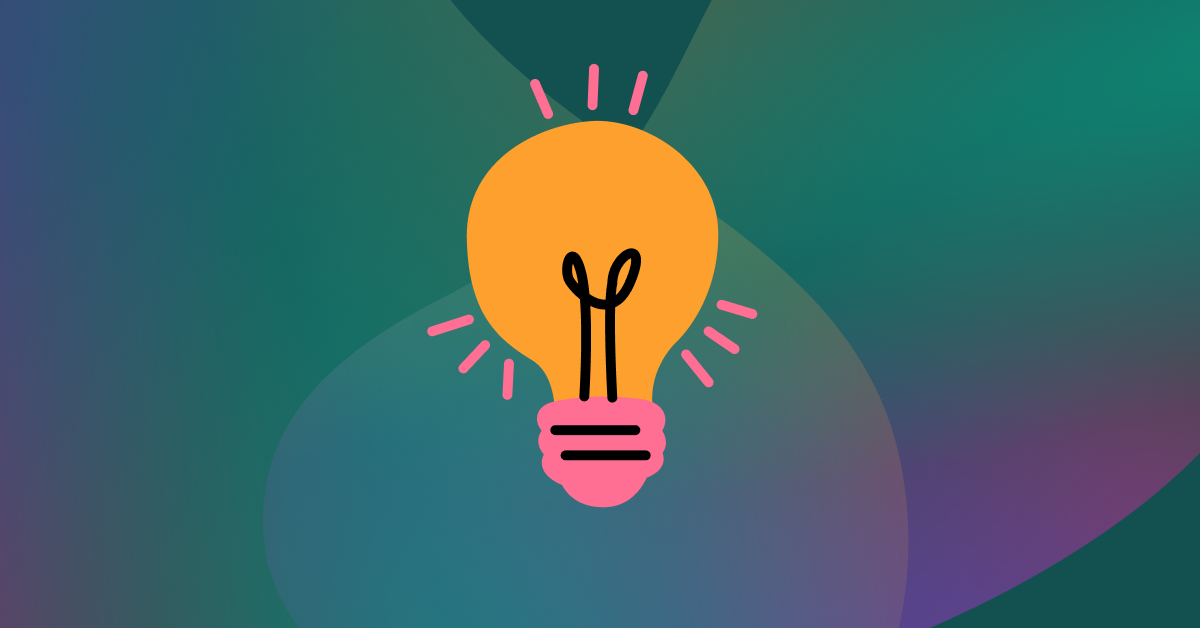Imagine you or your team is working on a project but can't get access to the data needed because it's stuck in a different department or tool. This is exactly what happens with data silos.
Data silos occur when different parts of a company collect and store relevant data without sharing it with others, leading to inefficiencies and missed opportunities. They make collaboration difficult, prevent smart decision-making, cause delays, reduce transparency, and lower team trust. By understanding what data silos are and how they impact your company, you can start to find ways to break them down.
Want to unlock the full potential of your company's data? Read on to discover how breaking down data silos can transform your organization.
Understanding data silos
A data silo is a collection of information controlled by one department or business unit and isolated from the rest of the organization, making it inaccessible to others. This separation, generally referred to as an information silo, prevents different systems and subsystems from working together efficiently, leading to inefficiencies and missed opportunities.
Why data silos occur in organizations
Understanding why data silos exist is crucial for effectively breaking them down. These barriers often emerge due to various organizational practices and decisions. By recognizing the underlying causes, you can better address the challenges and identify data silos within your organization.
Here are some key factors that contribute to the formation of data silos.
Decentralized IT and diverse technology solutions: Departments often purchase their own technologies, leading to incompatible or disconnected systems. The deployment of various data platforms like relational databases, NoSQL databases, and cloud storage also contributes to silos.
Organizational structure and culture: Separate management of business units and a lack of a data-sharing culture create natural barriers. Departments operating independently with their own goals and processes tend to view their data as proprietary assets.
Rapid growth and acquisitions: As companies expand quickly or merge with others, new business needs and additional units create silos. Integrating data from different sources becomes complex, often resulting in hidden or known silos.
Restrictive access and lack of collaboration: Bureaucratic access controls and the absence of a company-wide data management mandate hinder data sharing. Without a collaborative effort to make data accessible across departments, silos remain entrenched.
Is your brand a data leader or a laggard? Maximizing your org's data starts with a solid foundation. Take our data maturity quiz to learn your current level, and access our Behavioral Data Maturity Matrix to level up.
The business impact of siloed data
Siloed data can significantly hinder an organization's efficiency and effectiveness. When different departments store data separately, fragmented information impacts various business operations.
Here's a closer look at how data silos can impact your business.
Reduced productivity
Data silos make it tough for teams to work together. When data is isolated, it's harder to share information. Staff waste time trying to find data or working with incomplete data. This lack of access can harm collaboration and make it difficult to complete projects efficiently.
Teamwork suffers when everyone isn't on the same page and teams might make decisions based on partial information, leading to mistakes. Projects can also take longer to complete since everyone needs to verify their data. This inefficiency can slow down innovation and progress within your company.
Diminished visibility and data quality
Data silos make it tough to maintain good data quality. In fact, a Gartner report highlights that bad data costs companies an average of $12.9 million each year. "When data is stored in different places, it's hard to know if it's accurate. You might see the same information entered repeatedly, leading to duplicate data, which can mess up reports and analytics.
Fragmented data, scattered across multiple systems, exacerbates this problem. Data silos limit the ability to have a comprehensive view of operations, leading to fragmented information and hindered decision-making.
Poor customer experience
Customer service can take a big hit from data silos. Providing a seamless experience is nearly impossible if your customer data is scattered. Service reps might miss important info, leading to repeated questions and frustrated customers.
For example, if your customer data is split between sales and support teams, your service reps won't have the full picture. This can result in slower resolutions and poor support quality. The lack of complete data makes it hard to offer personalized experiences that today's customers expect.
Hindered decision-making
So, what's the downstream effect of reduced productivity, diminished data quality, and poor customer experience? Hindered decision-making.
When teams work with incomplete or fragmented data, making informed decisions becomes daunting. Efficiency drops as employees spend valuable time tracking down data from other departments, causing delays in the decision-making process. This can prevent your organization from acting swiftly on critical business opportunities and hinder overall strategic agility.

5 steps to break down data silos
Breaking down data silos means creating an environment where information flows freely across the organization. It involves dismantling the barriers that prevent data from being shared and used effectively. This process transforms isolated data sets into integrated resources everyone can access and benefit from, leading to a more agile and informed organization.
To achieve this, let's look at a few strategies that can help break down data silos:
1. Implement effective data governance strategies
Strong data governance is the backbone of breaking down silos. By setting clear policies, you ensure data is consistent and reliable. This involves defining roles for data management and establishing procedures for data access and sharing.
Data governance committee: Form a dedicated committee to oversee data policies, monitor compliance, and resolve issues. Ensure buy-in from all levels of the organization to enforce these policies effectively. The committee should include representatives from different departments to ensure comprehensive oversight.
Training programs: Educate employees on the importance of data governance and proper data handling practices. Regular workshops and online courses can help keep everyone updated on best practices, ensuring consistent data management across the organization.
2. Promote data literacy and culture
Educating employees and fostering a culture that values data sharing and collaboration are essential steps in breaking down silos.
Data literacy: Training programs help employees understand the importance of data governance and how to handle data properly. This includes understanding data privacy, security, and compliance requirements.
Foster a data culture: Encourage a culture where data sharing and collaboration are the norms. Use internal communication channels to highlight the benefits of data sharing and celebrate success stories where data collaboration led to positive outcomes.
Data democracy: Ensure that data is accessible and actionable for everyone, not just data scientists and IT experts. Implement self-service analytics tools that allow employees to access and analyze data independently.
3. Leverage technological solutions
Technology plays a critical role in breaking down silos. Integration tools can connect different data sources, making it easier to access and use information from various databases and repositories.
Data integration: Use integration tools to connect different data sources and create a unified view. This includes using APIs and middleware solutions to ensure seamless data flow between systems.
Software centralization: According to polling data, 69% see software centralization as a way forward. Centralized systems streamline data access and improve collaboration across departments. Centralized data platforms can provide a single source of truth for all organizational data.
Data virtualization: This allows you to access data without moving it from its original location. Real-time data virtualization tools can query and combine data from multiple sources on demand, reducing the need for complex data transfers.
4. Centralize data storage
Consolidating data into centralized systems ensures that everyone in the organization has access to the same information, improving consistency and accessibility.
Data centralization: Consolidate data into centralized systems to ensure everyone has access to the same information. This can involve migrating data from legacy systems to modern, centralized databases.
Data lakes: Utilize data lakes to store vast amounts of raw and structured data in a single, accessible repository. Data lakes can support diverse data types and formats, making them suitable for various analytics needs.
Cloud storage solutions: Leverage cloud storage to ensure scalability and easy access across the organization. Cloud solutions offer flexible storage options and advanced security features to protect sensitive data, ensuring data security.
5. Encourage data sharing and collaboration
Best practices in data management and collaboration can help prevent silos from forming.
Regular data audits: Conduct frequent audits to check for inconsistencies and inaccuracies, ensuring your data remains clean and reliable. Use automated data quality tools to streamline the audit process and identify issues quickly.
Promote open communication: Encourage regular meetings and use collaborative tools like shared databases to facilitate better data sharing. Implement collaboration platforms that integrate with your data systems to make data sharing seamless.
Document data processes: Keep detailed records of how data is collected, stored, and used. Standardize documentation practices across departments to ensure consistency and help new employees understand data processes.
Leveraging technology to overcome silos
As discussed in our section on steps to break down data silos, leveraging technology is crucial. To overcome data silos, you can use a mix of technologies. These include data lakes and cloud data warehouses, ETL processes, and cloud services with NoSQL databases. Each tool helps manage data more effectively and fosters better integration and accessibility.
Data lakes, warehouses, and modern analytics tools
Data lakes and data warehouses store vast amounts of raw and structured data. A data lake can hold everything in its natural format, making it versatile for various analytics tasks. On the other hand, a data warehouse like Snowflake is optimized for querying and reporting, offering fast answers to specific questions.
Modern analytics tools integrate with these storage solutions to provide insights. For instance, Fullstory Anywhere seamlessly incorporates behavioral data into existing data warehouses, bridging the gap between user actions and other business metrics. These integrations allow real-time data processing, helping you spot trends and patterns quickly.
Combining these technologies improves decision-making and ensures all your data is easily accessible, regardless of its source. By leveraging solutions like Anywhere, teams can access advanced behavioral insights without overhauling their entire tech stack, further breaking down data silos and enhancing the potential for advanced analytics and personalization.
The role of ETL processes and data connectivity
ETL (Extract, Transform, Load) processes consist of three steps: extracting data from different systems, transforming it into a consistent format, and loading it into a central repository. This method ensures that data from various sources is standardized and usable.
ETL tools connect disparate data sources, preventing silos by integrating all your information—often as part of a larger data warehouse integration strategy. Data connectivity makes sharing, analyzing, and gaining insights from your data easier. These tools are essential for maintaining data accuracy and consistency, which are critical for effective analysis and reporting.
Utilizing cloud services and NoSQL databases
Cloud services offer scalable solutions for data storage and processing. Providers like AWS, Azure, and Google Cloud allow you to store large datasets and access them from anywhere. They also provide tools for data integration and analysis, making it easier to manage your data.
NoSQL databases, such as MongoDB and Cassandra, are designed to handle unstructured data. They offer flexibility and performance benefits, especially for applications that need to scale quickly. By using cloud services and NoSQL databases, you can ensure your data remains accessible and scalable as your organization grows.
Fostering a data-driven organizational culture
Building a data-driven culture requires leadership commitment, promoting teamwork, and learning from successful examples. Key aspects include:
Leadership's role in cultivating a data-driven environment
Leaders set the tone for a data-driven culture. Executives must lead by example, actively using data in their decision-making processes and showing how data impacts business outcomes. Regularly sharing data insights and success stories builds trust and illustrates the value of data-driven decisions. Providing ongoing education about data literacy helps everyone understand and use data effectively. Investing in tools that make data accessible, such as centralized data platforms and user-friendly analytics, is essential.
Encouraging teamwork and openness in data handling
Creating a collaborative environment starts with breaking down silos. Encourage teams to share data freely to ensure everyone has access to the information they need. Centralized data storage can facilitate this. Promoting open communication about data issues and successes through regular cross-department meetings helps identify shared goals and challenges, fostering unity. Training programs, workshops, and continuous learning opportunities ensure everyone feels comfortable working with data, leading to more open collaboration.
How Fullstory can help break down data silos
As we've seen, breaking down data silos is critical for unlocking your organization’s potential. Fullstory is the perfect tool to help you achieve this by providing a unified view of customer interactions across departments.
With Fullstory, your teams can seamlessly share data, collaborate more effectively, and make informed decisions without the barriers that silos create.
Fullstory delivers real-time insights into customer behaviors, improving productivity, enhancing customer experiences, and encouraging a data-driven culture.
Ready to break down silos and transform your business?
Request a personalized Fullstory demo today and discover how integrated data can drive success.



